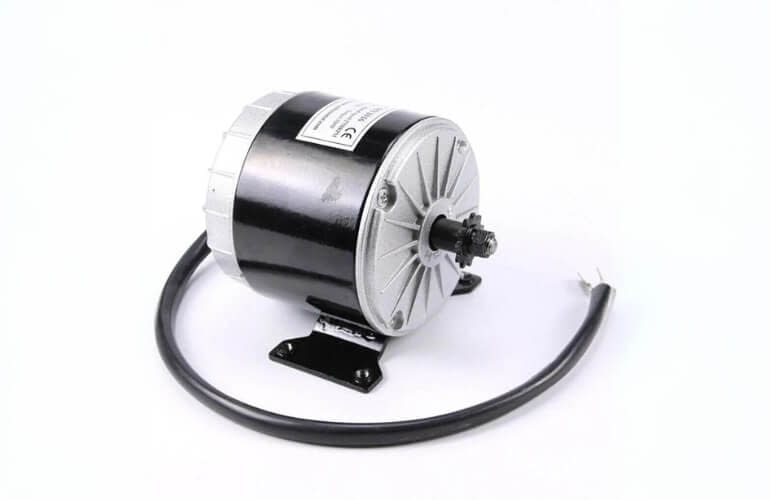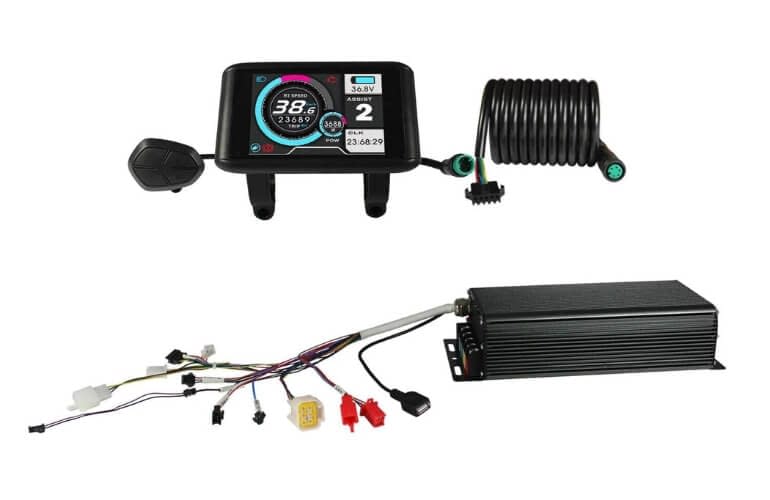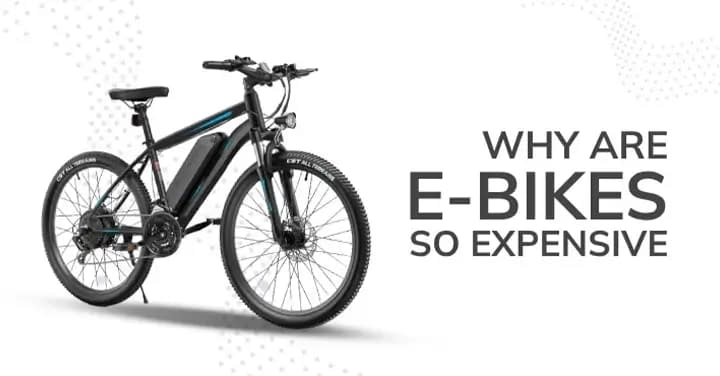The high price tag of electric bicycles often deters many people from purchasing them. While a traditional bike costs a few hundred dollars, electric bikes frequently cost $500 to $2,500 or even more. This leads to the inevitable question – why are electric bikes so expensive compared to regular bicycles?
E-bikes cost more due to motors, batteries, and electronics. They use pricey, durable materials but save on gas and maintenance over time. When you understand what goes into making an e-bike, the costs become more reasonable. Keep reading to learn the main factors contributing to the higher electric bicycle prices.
Batteries Drive Up the Cost

The main reason for the increased cost of electric bikes compared to traditional bicycles is the cost of the lithium-ion battery. These high-capacity batteries are expensive to manufacture and sensitive to transport safely.
The battery alone can account for 30-40% of an electric bike’s total cost. Lithium-ion batteries require complex engineering and pristine manufacturing conditions to prevent overheating and potential fires. Numerous battery cells must be carefully packed together and computer-monitored for voltage and temperature.
Lithium-ion batteries provide higher energy density compared to lead-acid batteries, lower weight, faster charging, longer lifespans, and consistent power output. However, their steep price is one of the most significant contributors to the high cost of electric bikes. Until lithium-ion battery prices fall substantially, electric bikes will remain an expensive investment for most consumers.
Motors

Electric bikes use brushless DC (BLDC) motors to provide pedal assistance and propulsion. These motors are more complex and finely engineered than the simple DC motors found in traditional bicycles. BLDC motors have multiple sets of electromagnets arranged around a rotor. The motor controller carefully times the energizing of each electromagnet to spin the rotor using magnetic fields. This creates a rotating magnetic field to turn the gears that drive the wheels.
Unlike traditional bike motors, BLDC motors are electronically commutated and have no brushes to wear out over time. They are designed for high efficiency and generate very little heat loss through the magnets. BLDC motors also provide good torque for hill climbing and quick acceleration from stops. The motor strength is typically rated in watts, with 250-500 watts standard for electric bikes. Higher wattage means more power and speed. Matching the motor power to the rider’s needs is an important factor in e-bike design. Overall, the precision engineering of electric bike motors results in higher costs than a simple mechanical bicycle drivetrain. But they enable an e-bike to amplify human pedal power.
Electronics

Electric bikes have sophisticated electronics that add to their cost compared to traditional bicycles. The electronics on an e-bike include:
Motor controller: This controls and regulates the speed and power output of the motor. More advanced controllers allow for finer tuning and programmability.
Display/control panel: This lets the rider view speed, battery level, pedal assist levels, etc. Color displays with smartphone connectivity cost more.
Sensors: Torque and cadence sensors determine how much and how fast the rider is pedaling in order to activate the motor assist. Higher-quality sensors improve the riding experience.
Wiring: The wiring that connects all the electronics is specialized and well-insulated to withstand vibration, moisture, etc.
Battery management system: This monitors the battery usage and charging to protect the expensive lithium-ion battery pack. It prevents damage from over-charging and prolongs battery life.
Integrating these electronic components into a functional, robust, and weather-resistant package adds engineering, assembly, and component costs compared to a traditional bike with minimal electronics. Sophisticated electronics enable an e-bike to feel and handle more like a natural bike ride, but they are not cheap. As technology continues to advance, costs should gradually decrease.
Why Electric Bike Frames Are Expensive To Manufacture

Electric bikes require sturdy, reinforced frames to support the extra load of the motor, battery, and other electronics. Whereas regular bicycle frames can be made from lightweight aluminum or carbon fiber, most e-bike frames need to be constructed from steel or chromoly steel alloy to provide the necessary strength and durability.
Steel boasts exceptional tensile strength and demonstrates remarkable resistance to fatigue, making it well-suited for handling the torque generated by powerful e-bike motors. E-bike frames need to have large tubing diameters and thicker tubes to reduce flex under load. The joints also require gussets and reinforcement to handle the forces involved.
Manufacturing sturdy steel e-bike frames requires more raw materials, specialized welding and fabrication equipment, and skilled labor. The complex double-triangle geometry further adds to production costs. These robust frames represent a significant portion of the total expense of an electric bicycle.
While some lightweight e-bikes can utilize aluminum frames, most electric bikes need strong, rigid steel frames that are more costly to produce. This is a major factor driving up the retail price of electric bicycles.
Assembled in USA/Europe

Electric bikes sold in the USA and Europe are often assembled in those higher-wage regions rather than imported fully assembled from Asia. The labor required to assemble an e-bike is significantly more than a traditional bicycle, with the installation and wiring of motors, batteries, and electronics. Performing this assembly work in the United States and Europe with their high labor costs adds to the retail price.
In contrast, most non-electric bicycles sold in the USA are imported as finished products from regions with lower labor costs like Taiwan or China. However, import tariffs make assembling electric bikes destined for American and European consumers in those markets more economical. The benefit of higher-skilled assembly labor offsets the slightly increased production costs.
Advanced Features

Many electric bikes today come with impressive technology that was unheard of just a few years ago. These advanced features allow for a more refined and customized riding experience, but they also significantly increase the cost of manufacturing.
For example, mid to high-end e-bikes now incorporate advanced displays with connectivity options. The display panel acts as an onboard computer, showing information like battery level, speed, distance traveled, motor power assist level, and more. Some displays even have GPS navigation, ride tracking, and smartphone connectivity via Bluetooth. These complex displays and accompanying firmware add to the cost.
Higher-end electric bikes also integrate sophisticated sensors and self-adjusting motors. Cadence sensors detect the rider’s pedaling force and adjust the motor output to seamlessly match their effort. More advanced torque sensors measure precise pedal pressure and deliver proportional power. These auto-sensing motors provide a more natural biking feel. However, the complex sensors and programming significantly add to the e-bike’s price.
Other premium features on today’s electric bikes include automatic shifting, electronic suspension adjustment, integrated lights, theft-deterrence tech like GPS tracking, and even radios. While these features improve the riding experience, they require advanced engineering and extensive development, which gets passed onto the retail price.
In short, high-end electric bikes now offer an exceptional riding experience thanks to impressive technology that was unavailable just a few years ago. But these major advancements in features come at a steep price which is why premium electric bikes cost so much more than standard models.
Conclusion: Why Are Electric Bikes So Expensive?
Electric bikes come with a higher price tag for several key reasons. At their core, e-bikes require expensive battery and motor technology to enable electric pedal assist. Lithium-ion batteries and mid-drive motors elevate the costs compared to standard bicycles. Beyond these core electric components, e-bikes feature more advanced gearing, integrated electronics, and high-quality frames.
With all these advanced components and specialized production, electric bikes provide an optimized cycling experience, combining electric power with standard cycling. While the costs are higher, e-bikes enable more people to ride more often, providing great value over years of ownership.
